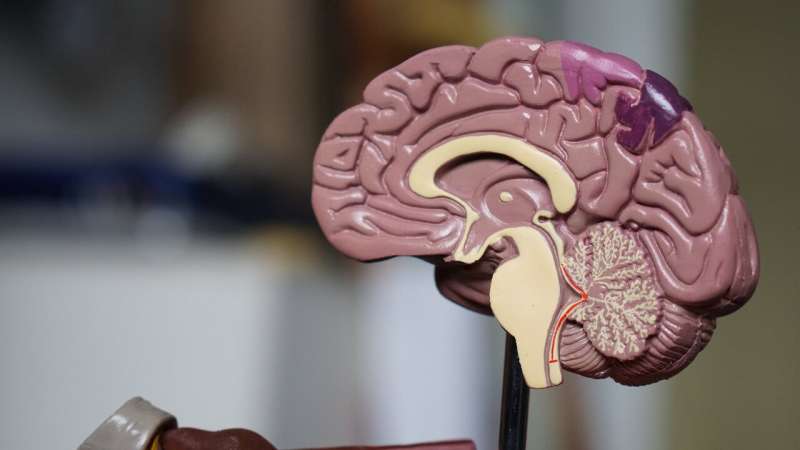160 genes linked to brain shrinkage in study of 45,000 adults

A new study implicates 160 genes in brain shrinkage seen on MRIs of 45,000 healthy adults. The shrinkage is in the cortex, the dimply outer layer of the brain that gives rise to thinking, awareness and action, and largely consists of gray matter.
The study, published Sept. 22 in the journal Nature Communications, examined 34 regions of the cortex in a discovery group of 22,894 individuals, then confirmed the findings in a replication group of 22,635 individuals.
"It is important to understand the biology of multiple regions of the cortex because each is affected differently in the various types of neurodegeneration including Alzheimer's disease," said Sudha Seshadri, MD, senior study author from The University of Texas Health Science Center at San Antonio (UT Health San Antonio).
"We asked, 'What are the genes that seem to determine the thickness, area and volume of gray matter in these regions?'" Dr. Seshadri, who directs the university's Glenn Biggs Institute for Alzheimer's and Neurodegenerative Diseases, added. "And the genes we found point to interesting pathways that seem to be involved in brain development, vascular and neurodegenerative disease, and some psychiatric conditions."
Brain shrinkage occurs with normal aging, but the pattern of shrinkage in healthy individuals differs from the pattern in those who develop disease. The genes represent new targets of study for development of drugs to intervene before the onset of clinical symptoms, Dr. Seshadri said.
"This is a very rich resource, and it will be mined for many years to understand the different associations we are seeing," Dr. Seshadri said. "We are excited to share it with the world."
Large study samples
Claudia Satizabal, Ph.D., of the Biggs Institute and Department of Population Health Sciences in UT Health San Antonio's Joe R. and Teresa Lozano Long School of Medicine, is one of the lead epidemiologists for the research. "This study has considerable statistical power," Dr. Satizabal said. "Because the results from the first sample were replicated in a second equally large sample, it is less likely that the results are purely due to chance."
Dr. Satizabal and Dr. Seshadri previously published a study on the volumes of structures deep within the brain that determine subconscious needs such as appetite and sleep. In this new paper the team examined the brain surface, which is important for conscious thinking abilities.
The discovery sample is from 20 study populations within the Cohorts for Heart and Aging Research in Genomic Epidemiology (CHARGE) consortium and the UK Biobank. The replication sample is from the Enhancing NeuroImaging Genetics through Meta-Analysis (ENIGMA) Consortium.
Study limitations included the variability of instruments to image the brain among cohorts due to different scanners, field strengths and analysis software. The sample is composed mainly of European ancestry.
"We seek to add other ethnicities to the CHARGE cohorts, including our Hispanic population of South Texas," Dr. Seshadri said.
More information: Genetic correlations and genome-wide associations of cortical structure in general population samples of 22,824 adults, Nature Communications (2020). DOI: 10.1038/s41467-020-18367-y
















